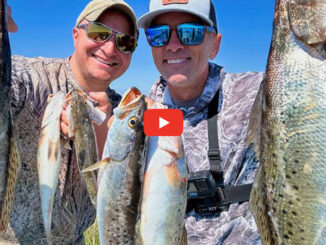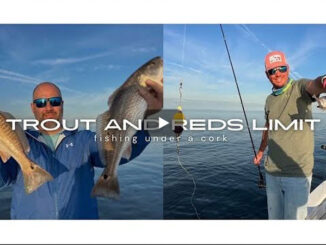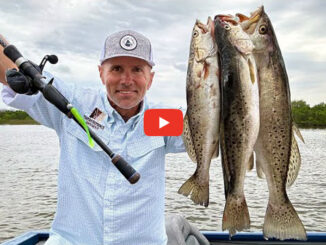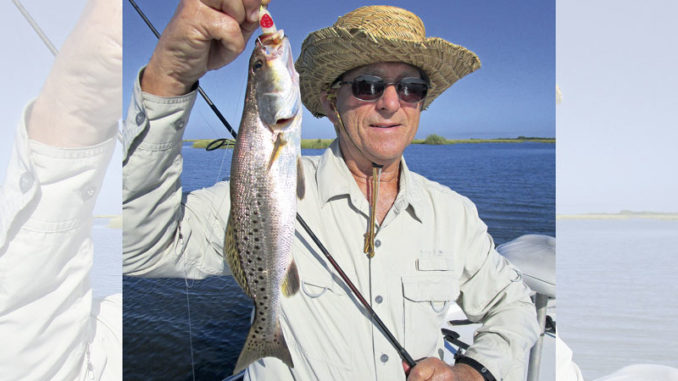
Follow the birds, go with smaller baits when targeting November trout
Every year at this time, I start making some forays into the Galliano Sulphur Mine area, which has produced good numbers and good sized speckled trout for decades.
My good friend and ex-charter captain, Gordon Matherne, took a break from duck hunting and invited me to see if the trout showed up in the mine. We’d barely pulled away from the dock at Basson’s Launch when we spotted a flurry of seagull activity on the surface about 50 yards away. Matherne motored to within casting distance, and we started flinging specks into the boat. Most were undersized, but not by much; about one in five was a keeper. After a few, brief minutes, the flock was gone, and so were the trout.
“The birds are feeding on white shrimp, and they move fast, much faster than brown shrimp,” Matherne said. “Keep your eyes open, and you’ll see them diving up ahead in a few minutes.”
Chasing the gulls
Sure enough, the flock regrouped and were pounding the surface about 100 yards ahead. We chased them and put a few more specks in the boat with the same ratio of shorts to keepers.
We did this all morning, criss-crossing the mine, chasing the fast-moving flocks of gulls feeding on the speed-demon shrimp that were the targets of our target: the silver, speckled wonders.
“It is so good to see so many trout in the mine,” Matherne said. “It means we’re on track for a great November, which is usually the best month to catch them in big numbers. The fish themselves won’t be whoppers, but the ratio of keepers to catch should improve a bit.”
By mid-morning, the flocks had scattered.
“This is when we start fishing the passes and mouths and bigger drains from the marsh into the mine on the falling tide,” said Matherne, who discussed his Sulphur Mine strategy, which will hold true for the rest of the year.
Passes, cuts and points
Fish the big passes, cuts and points in the mine itself, and, if the water is high enough, in the big ponds and washouts around the mine. Two important factors: fish the falling tide, and fish where the current is moving.
Bigger isn’t always better
I started out throwing a 3½-inch Vudu Rattling shrimp in gold/striped color, under one of those big, extra-noisy popping corks. It was a deadly combination on the edges of Bay Eloi just a week before, but Matherne seriously outfished me. He was casting tandem-rigged H&H Sparkle Beetles on 1/8-ounce jigs, under a small, unweighted H&H split-cork. He got hits almost every cast, while my bait was almost entirely neglected.
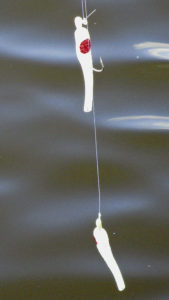
“Your cork is too big and too noisy; your bait is too big, and you should be throwing white,” Matherne said.
I switched to a smaller H&H oval cork and a white/chartreuse 3-inch Vudu and was in the action immediately.
Make sure and carry a variety of cork sizes as well as lure sizes and colors, and be prepared to switch, if what you are using is not producing. Under the birds, it doesn’t matter, because they’re in a feeding frenzy and will hit anything regardless of size or color. In bigger, deeper water the big, noisy corks are advantageous, but in calmer, shallower water, the fish can be finicky and put off by the noise. Also, tandem-rigged baits will often out-produce a single bait this time of year. Something about the second bait prompts them to strike.
Matherne said the excellent action should continue at least through mid-December, when the white trout leave.
